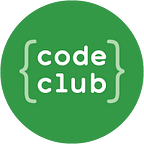Black Holes and Moonhack
In the 1980s, life was simple. I was born in the 1980s, I started primary school in the 1980s and I watched David Bowie (also known as Jareth the Goblin King from Labyrinth) on MTV in the 1980s. I had a great childhood. One full of creativity, discovery and many daydreams.
When I was a kid I loved to read. My favourite place was our local library and my best source of knowledge after my dad, was our family set of Encyclopedia Britannica. A prized possession of many families prior to Wikipedia (thanks Jimmy Wales and Larry Sanger), the Britannica was the go-to for all things knowledge related.
I used to take my Britannica to the sun lounge in our back garden, after dark, along with a pair of binoculars, a torch, a blanket and a snack (usually the pink centred Arnott’s biscuits). Once I had set myself up, I set to work trying to discover both new and old stars and planets. I had plans to be an astronaut, or a cosmologist and my favourite scientist was Nicolaus Copernicus, who I had decided I was going to name my first son after.
Sometime in the mid-1990s I was browsing science books in my local bookstore, when I stumbled across a beautifully illustrated book by the name of Black Holes: A Journey to the heart of a black hole — and into on of the greatest mysteries of the universe. That purchase began my obsession with naked singularities; places of infinite density where, as quoted by authors, Couper and Henbest, ‘the laws of physic break down and anything is possible.’ Even more intriguing to my teenage mind, was the idea that if a human were to enter a black hole feet first, initially everything would appear as normal to the observers watching from their spaceship, but as the astronaut began to approach the event horizon, she would start to stretch by a force called spaghettification, because at that point in her journey, gravity would be pulling more strongly on her feet than on her head. As the onlookers continue to watch their friend, she would appear to stall in an elongated state, just above the event horizon, but for the intrepid astronaut, spacetime has become so warped that her journey across the event horizon, should she be lucky enough not to be stretched into nothingness, might allow her glimpses into other universes and indeed, might prove a bridge to another universe.
Happily, my journey into the world of black holes did not stop there. I went on to read about the potential for scientists to create wormholes utilising antigravity, and the opportunities for time travel. I was introduced to Stephen Hawking, the great cosmologist and his work on the origin of the universe and I learnt about quasars, mirages and ‘ripples in spacetime,’ or gravitational waves.
I decided that if NASA were ever to put out a call for a brave individual to come and train for a mission to enter a black hole, I would not only put up my hand, but I would give anything to attempt the mission. Spaghettification, or not, I was hooked on black holes.
July 20 will mark 49 years since the first humans walked on the moon and this year, for the third year running, Code Club Australia are leading a mission called Moonhack, a 24 hour period in which we hope to get as many kids as possible coding, from all corners of the earth. All projects are available on the Code Club Australia website, they are free and open to all — the only thing you require is a passion for discovery, an internet connection and a computer. If you haven’t checked out the website, please do. Over there you’ll discover space missions for kids to get them engaged in coding on platforms from Scratch, to Python, Micro:Bit and GameFroot.
Learn how to host your own Moonhackathon and register here to start your moon mission. I’ll see you there (if I haven’t been contacted by NASA for mission spaghettification!).
Dr Louise Baker
Moonhack Mission Control (Code Club GM)
